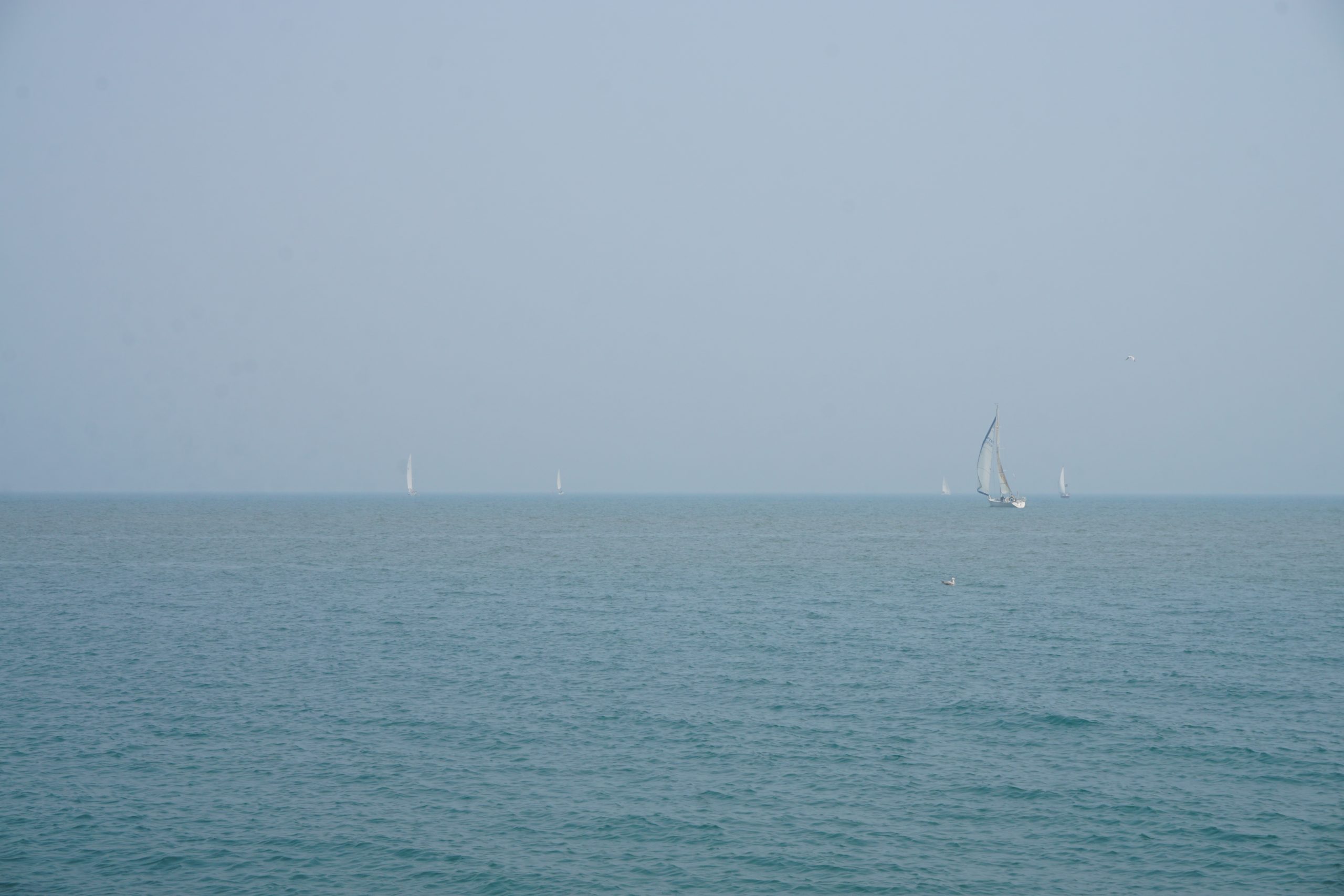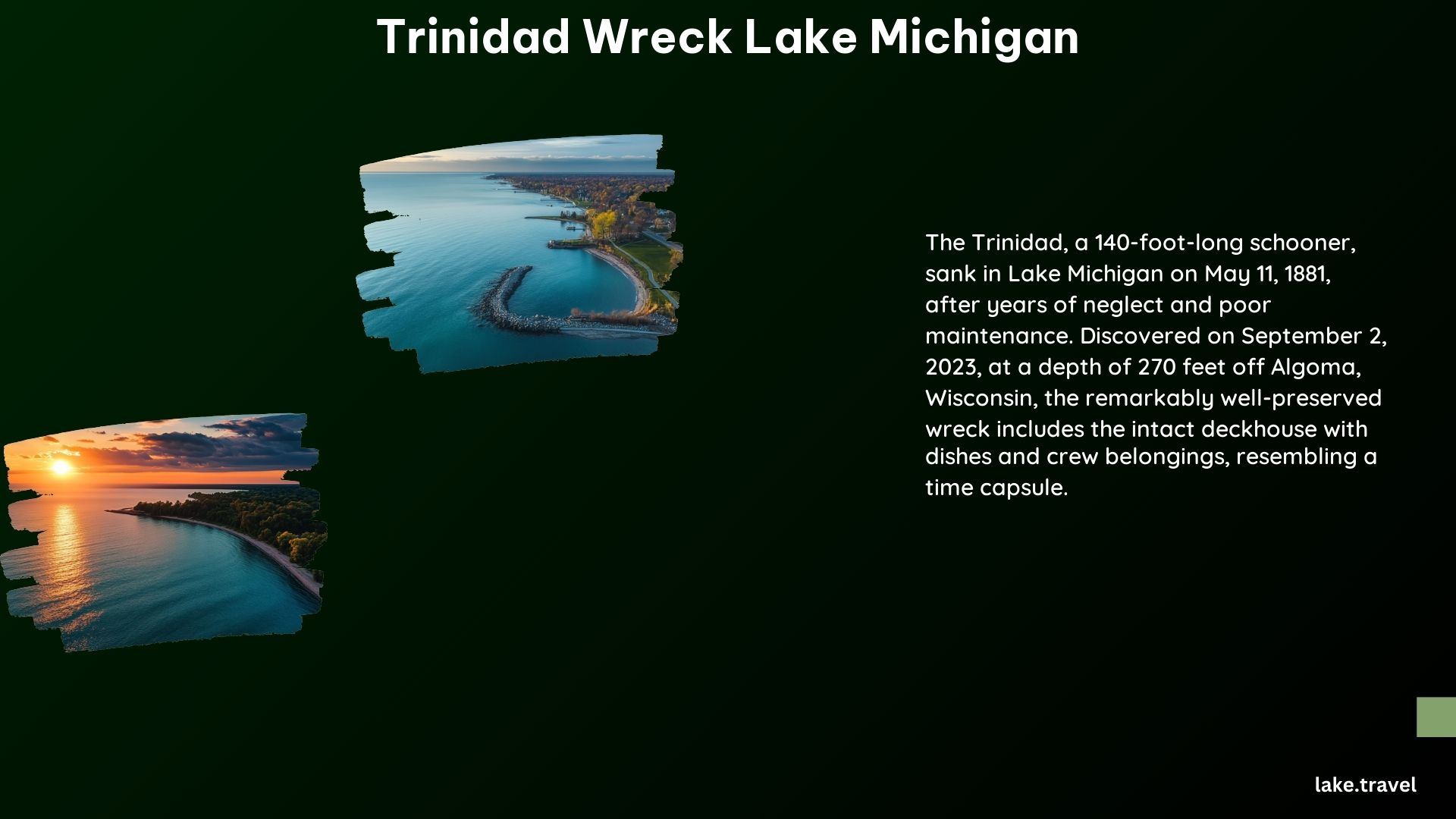The Trinidad shipwreck, discovered in Lake Michigan in July 2023, is a remarkably intact 140-foot-long schooner that sank on May 11, 1881. This captivating find has captured the attention of maritime historians, archaeologists, and enthusiasts alike, offering a unique glimpse into the past and the rich history of the Great Lakes region.
Where was the Trinidad Shipwreck Found in Lake Michigan?

The Trinidad shipwreck was found approximately 10 miles off the shoreline of Algoma, Wisconsin, at a depth of about 270 feet (300 feet in some reports) below the surface of Lake Michigan. This remote and relatively unexplored area of the lake has yielded yet another remarkable discovery, adding to the growing list of well-preserved shipwrecks that have been uncovered in the region.
The Trinidad’s Role in the Grain Trade

Prior to its sinking in 1881, the Trinidad was primarily used for transporting goods, particularly grain, between the Midwest and Northeast. Built in 1867, the schooner was a workhorse of the grain trade, carrying coal or iron from Oswego, New York, to Chicago and Milwaukee, and returning with Wisconsin wheat. Its sturdy construction and reliable performance made it a valuable asset in the bustling maritime economy of the late 19th century.
Depth and Preservation of the Trinidad Wreck
The Trinidad shipwreck was found at a depth of approximately 270 feet (300 feet in some reports) below the surface of Lake Michigan. This significant depth, combined with the cold, fresh waters of the Great Lakes, has contributed to the remarkable preservation of the vessel. The deckhouse, a crucial component of the ship, remains largely intact, housing various possessions of the crew, including anchors, bells, and dishes.
The Trinidad’s History and Sinking
The Trinidad was built at Grand Island, New York, in 1867 and was known for its fine condition. However, the ship had a history of leaks and poor maintenance, which ultimately contributed to its demise. On May 11, 1881, the Trinidad began taking on water rapidly, and the crew, led by Captain John Higgins, was forced to abandon the ship. The crew managed to escape in a small boat, rowing for nearly eight hours before reaching the shore.
The Discovery and Significance
The Trinidad shipwreck was discovered by maritime historians Brendon Baillod and Robert Jaeck, who used sonar technology and historical documents to locate the site. The discovery is significant, and the team plans to nominate the site for inclusion on the National Register of Historic Places. The well-preserved state of the wreck offers a unique opportunity for researchers and enthusiasts to study the vessel and gain insights into the maritime history of the Great Lakes region.
Conclusion
The discovery of the Trinidad shipwreck in Lake Michigan is a remarkable and captivating find that has captured the imagination of many. This well-preserved schooner, with its rich history and intriguing details, provides a window into the past, offering a glimpse into the vibrant maritime economy and the challenges faced by sailors navigating the treacherous waters of the Great Lakes. As researchers and enthusiasts continue to explore and study this remarkable wreck, the Trinidad’s story will undoubtedly continue to unfold, shedding light on the rich tapestry of the region’s history.
References:
– New York Times Article
– USA Today Article
– NPR Article
– Smithsonian Magazine Article
